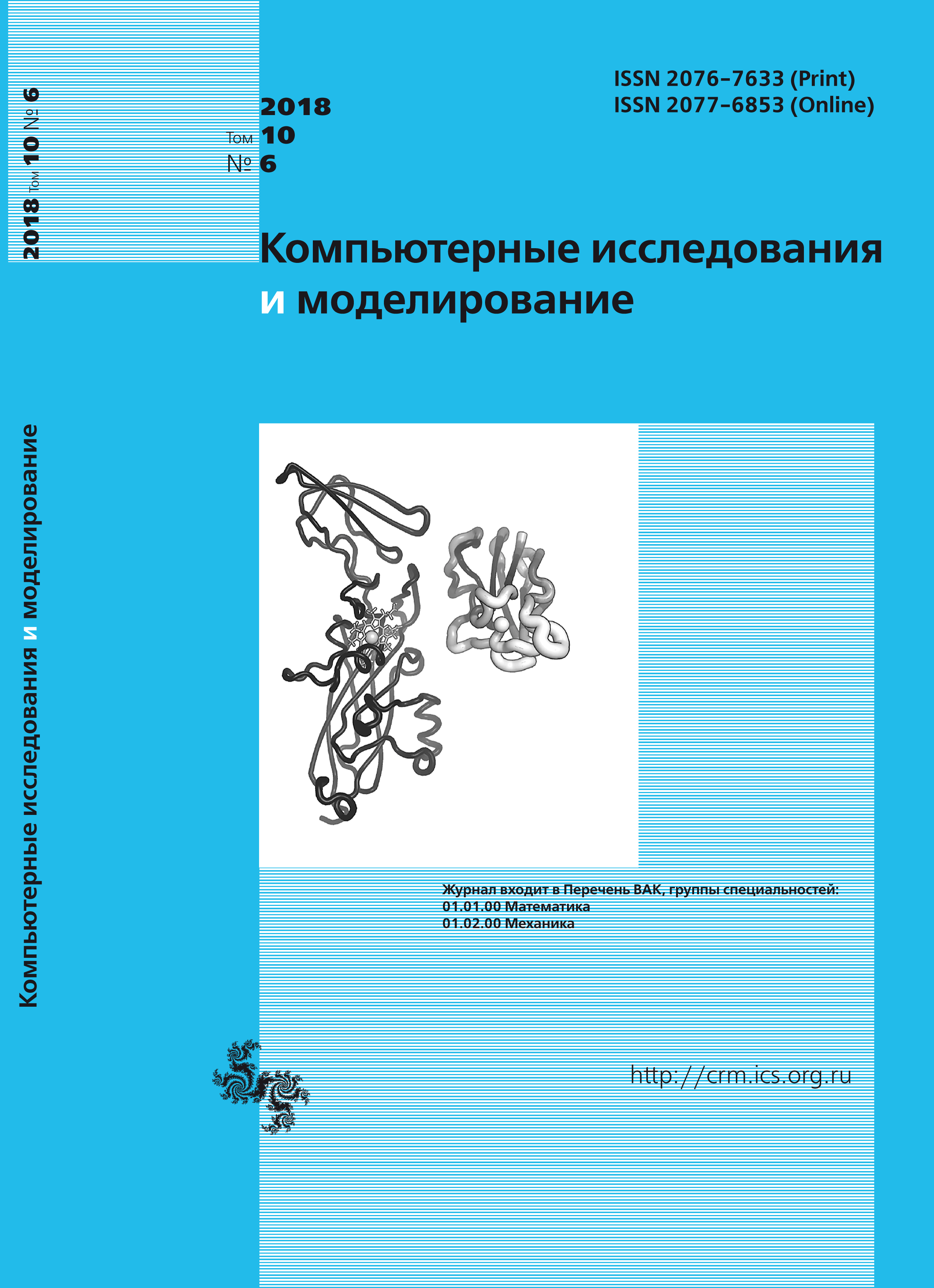All issues
- 2025 Vol. 17
- 2024 Vol. 16
- 2023 Vol. 15
- 2022 Vol. 14
- 2021 Vol. 13
- 2020 Vol. 12
- 2019 Vol. 11
- 2018 Vol. 10
- 2017 Vol. 9
- 2016 Vol. 8
- 2015 Vol. 7
- 2014 Vol. 6
- 2013 Vol. 5
- 2012 Vol. 4
- 2011 Vol. 3
- 2010 Vol. 2
- 2009 Vol. 1
Stress-induced duplex destabilization (SIDD) profiles for T7 bacteriophage promoters
The functioning of DNA regulatory regions rely primarily on their physicochemical and structural properties but not on nucleotide sequences, i.e. ‘genetic text’. The formers are responsible for coding of DNA-protein interactions that govern various regulatory events. One of the characteristics is SIDD (Stress-Induced Duplex Destabilization) that quantify DNA duplex region propensity to melt under the imposed superhelical stress. The duplex property has been shown to participate in activity of various regulatory regions. Here we employ the SIDD model to calculate melting probability profiles for T7 bacteriophage promoter sequences. The genome is characterized by small size (approximately 40 thousand nucleotides) and temporal organization of expression: at the first stage of infection early T7 DNA region is transcribed by the host cell RNA polymerase, later on in life cycle phage-specific RNA polymerase performs transcription of class II and class III genes regions. Differential recognition of a particular group of promoters by the enzyme cannot be solely explained by their nucleotide sequences, because of, among other reasons, it is fairly similar among most the promoters. At the same time SIDD profiles obtained vary significantly and are clearly separated into groups corresponding to functional promoter classes of T7 DNA. For example, early promoters are affected by the same maximally destabilized DNA duplex region located at the varying region of a particular promoter. class II promoters lack substantially destabilized regions close to transcription start sites. Class III promoters, in contrast, demonstrate characteristic melting probability maxima located in the near-downstream region in all cases. Therefore, the apparent differences among the promoter groups with exceptional textual similarity (class II and class III differ by only few singular substitutions) were established. This confirms the major impact of DNA primary structure on the duplex parameter as well as a need for a broad genetic context consideration. The differences in melting probability profiles obtained using SIDD model alongside with other DNA physicochemical properties appears to be involved in differential promoter recognition by RNA polymerases.
Copyright © 2018 Orlov M.A., Kamzolova S.G., Ryasik A.A., Zykova E.A., Sorokin A.A.
Views (last year): 18.Indexed in Scopus
Full-text version of the journal is also available on the web site of the scientific electronic library eLIBRARY.RU
The journal is included in the Russian Science Citation Index
The journal is included in the RSCI
International Interdisciplinary Conference "Mathematics. Computing. Education"







